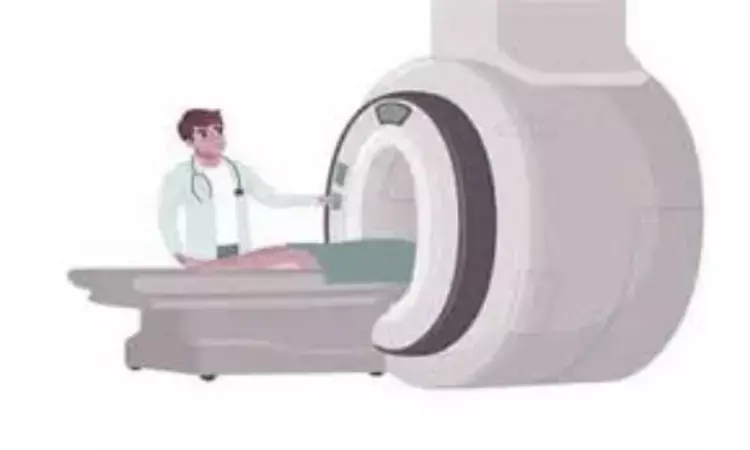- Home
- Medical news & Guidelines
- Anesthesiology
- Cardiology and CTVS
- Critical Care
- Dentistry
- Dermatology
- Diabetes and Endocrinology
- ENT
- Gastroenterology
- Medicine
- Nephrology
- Neurology
- Obstretics-Gynaecology
- Oncology
- Ophthalmology
- Orthopaedics
- Pediatrics-Neonatology
- Psychiatry
- Pulmonology
- Radiology
- Surgery
- Urology
- Laboratory Medicine
- Diet
- Nursing
- Paramedical
- Physiotherapy
- Health news
- Fact Check
- Bone Health Fact Check
- Brain Health Fact Check
- Cancer Related Fact Check
- Child Care Fact Check
- Dental and oral health fact check
- Diabetes and metabolic health fact check
- Diet and Nutrition Fact Check
- Eye and ENT Care Fact Check
- Fitness fact check
- Gut health fact check
- Heart health fact check
- Kidney health fact check
- Medical education fact check
- Men's health fact check
- Respiratory fact check
- Skin and hair care fact check
- Vaccine and Immunization fact check
- Women's health fact check
- AYUSH
- State News
- Andaman and Nicobar Islands
- Andhra Pradesh
- Arunachal Pradesh
- Assam
- Bihar
- Chandigarh
- Chattisgarh
- Dadra and Nagar Haveli
- Daman and Diu
- Delhi
- Goa
- Gujarat
- Haryana
- Himachal Pradesh
- Jammu & Kashmir
- Jharkhand
- Karnataka
- Kerala
- Ladakh
- Lakshadweep
- Madhya Pradesh
- Maharashtra
- Manipur
- Meghalaya
- Mizoram
- Nagaland
- Odisha
- Puducherry
- Punjab
- Rajasthan
- Sikkim
- Tamil Nadu
- Telangana
- Tripura
- Uttar Pradesh
- Uttrakhand
- West Bengal
- Medical Education
- Industry
Pediatric MRI anesthetic doses can be reduced by reducing MRI time: Study

Boston, MA: There is an increasing interest to minimize the amount of scan time under anesthesia for pediatric Magnetic Resonance Imaging scans due to the long-term neurocognitive outcomes. Now, a recent study published in the American Journal of Roentgenology determines how the amount of time could predict anesthesia risk.
According to the study, exposure to pediatric Magnetic Resonance Imaging anesthesia can be predicted and quantified based on clinical and imaging variables.
Intravenous propofol offers several advantages as an anesthetic for children undergoing magnetic resonance imaging. An intravenous anesthetic without endotracheal intubation allows for careful titration of sedation to achieve a clinical effect and eliminates the need for a nonferromagnetic anesthesia machine.
Fedel Machado-Rivas, Massachusetts General Hospital, 55 Fruit St, Boston, MA, and colleagues evaluated pediatric MRI scan time as a predictor of total propofol dose, considering imaging and clinical characteristics as covariates.
The researchers retrospectively searched the EHR to identify MRI examinations performed under propofol anesthesia from 2016 to 2019 in patients 0-18 years old. It included MRI examinations of brain, brain and spine, brain and abdomen, and brain, head, and neck. Demographic, clinical, and imaging data were extracted for each examination, including anesthesia maintenance phase time, Magnetic Resonance Imaging scan time, and normalized propofol dose.
Using Student's T-test, MRI scan time, and propofol dose were compared between groups.
Key findings of the study include:
- A total of 501 examinations performed in 426 unique patients (172 girls, 254 boys; mean age 6.55 ± 4.59 years) were included.
- Single body part examinations were shorter (mean 52.7 ± 18.4 min) and received less propofol (mean 17.7 ± 5.7 mg/kg) than multiple body part examinations (mean 89.3 ± 26.4 min, and mean 26.1 ± 7.7 mg/kg).
- Among single body part examinations, a higher ASA classification, oncologic diagnosis, 1.5T magnet and IV contrast administration were associated with longer MRI scan times and higher propofol exposure.
- In multivariable analysis, greater propofol exposure was predicted by MRI scan time (0.178 mg/kg per minute of the exam, multiple body part examination, and IV contrast administration; lower exposure was predicted by 3T magnet.
"This study serves as a valuable baseline for future efforts to reduce pediatric MRI anesthetic medication doses and MRI scan times," concluded the authors.
The study, "Predictors of Anesthetic Exposure in Pediatric MRI," is published in the American Journal of Roentgenology.
Dr Kamal Kant Kohli-MBBS, DTCD- a chest specialist with more than 30 years of practice and a flair for writing clinical articles, Dr Kamal Kant Kohli joined Medical Dialogues as a Chief Editor of Medical News. Besides writing articles, as an editor, he proofreads and verifies all the medical content published on Medical Dialogues including those coming from journals, studies,medical conferences,guidelines etc. Email: drkohli@medicaldialogues.in. Contact no. 011-43720751


